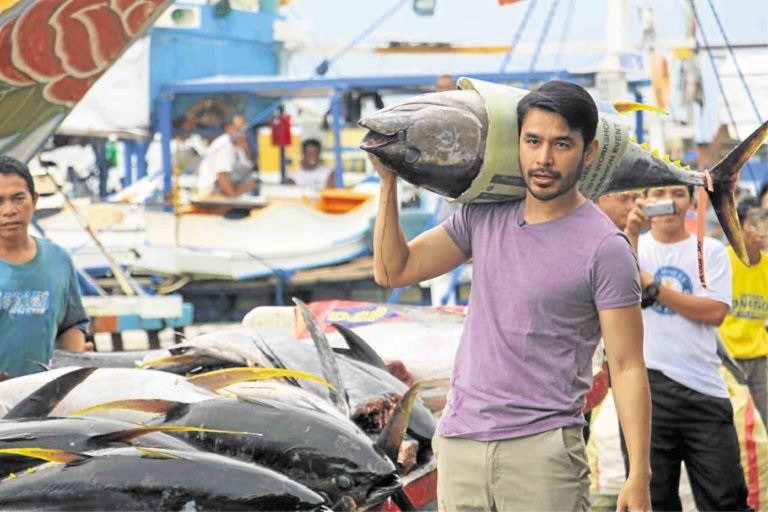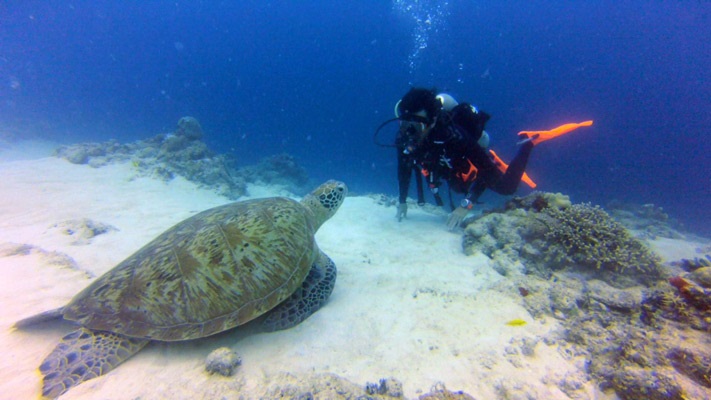
Atom Araullo in the tuna market in Sarangani. The big catch comes with a price in life and limb.
We have seen several documentaries on the state of the country’s marine life, but nothing comes close to the scope and depth of “Philippine Seas” hosted by Atom Araullo.
This well-done documentary brings the TV viewers to the rich but threatened marine resources from Luzon and on to Visayas and Mindanao.
The quality of research and coverage is commendable. And while viewers feast on the statistics, there is a human element thrown in as Araullo travels and comes face to face with fishermen and how they eke out a livelihood in the high seas. He lives with them, he experiences the rough seas and he counts the hours before a good catch materializes.
It is a hard-knock life, Araullo discovers, and the sad reality of these fishermen’s existence he re-lives as he visits their families.
On the other hand, other fishermen encroach on foreign seas, get arrested and separated from their families for weeks on end as the legal process takes time to be resolved.
As a sidelight, the docu also reports the plight of foreign fishermen caught poaching in the Philippine seas.
Indeed, this documentary gives us true-to-life drama as he visits fishermen and how their lives changed after engaging in dynamite fishing.
Probably its best feature is the quality of undersea photography that gives the viewers breathtaking slices of sea life.
Like this scene of Araullo visiting a panoramic array of sardines in Moalboal, Cebu. On the TV screen, the scene turns into a virtual and breathtaking ocean tapestry as Araullo virtually swims with them.
Running at about an hour and a half, the documentary considers the country’s rich marine life even as it chronicles the daily life of Filipino fishermen and what they go through to earn a living in the high seas.
Of special interest is the exploration of the 13-million-hectare Philippine Rise. The revenue that the country can get from this newly discovered marine territory can translate into awesome revenue for the government.
With good underwater camera shots, one saw the wealth of rare corals and marine species. How the country can benefit from these rich natural resources is given a thorough discussion in the documentary.
 Atom Araullo face to face with the biggest sea turtle he has seen in his life in Palawan.
Atom Araullo face to face with the biggest sea turtle he has seen in his life in Palawan.
As it is, “Philippine Seas” is a gem of a documentary and it is a good reflection of Araullo as a dedicated and passionate broadcast journalist.
On the other hand, it is a good eye opener as it warns us about the disastrous consequences if we don’t heed the climate change warning and if we don’t act soon and fast.
This documentary should be aired in all schools and government offices and should be required viewing for the country’s environmentalists.
Presented by GMA Public Affairs, the documentary is incisive, well-researched and thoroughly encompassing in its coverage.
